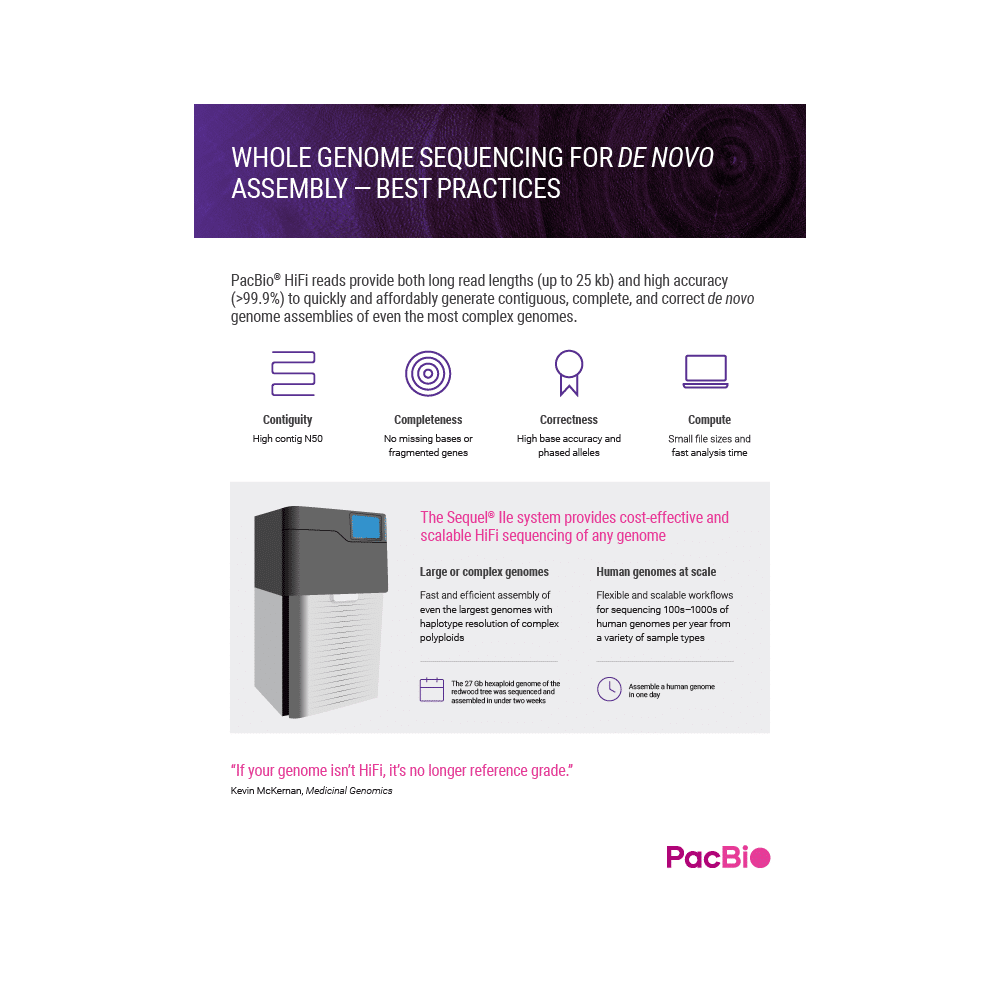Gain comprehensive access to human genetic variation
Generate reference-quality de novo assemblies
With HiFi sequencing it is possible to sequence and assemble individual human genomes to:
- Produce references unique to a population, disease, or individual
- Generate fully phased haplotypes to capture common alleles in the population
- Access novel types of genetic variation and difficult-to-characterize regions
- Use novel reference sequences to improve variant detection in population specific loci
Workflow
From DNA to human genome assembly with HiFi sequencing
PacBio is the only sequencing technology to offer HiFi reads.
Use this workflow to generate high-quality de novo assemblies quickly and affordably.
Library preparation
Starting with unamplified genomic DNA, prepare libraries for whole genome sequencing using standardized protocols and workflow recommendations.
- Prepare a library in ~5 hours with the SMRTbell express template prep kit 2.0 from 5 μg of unamplified genomic DNA
- Enrich for longer inserts with size selection
Sequencing
The Sequel IIe system provides affordable HiFi coverage for high-quality genome assemblies.
- Use the Sequel II or IIe system and SMRT Cell 8M to sequence to desired coverage depth for complexity of genome
- 10- to 15-fold coverage per haplotype recommended
* Read lengths, reads/data per SMRT Cell 8M and other sequencing performance results vary based on sample quality/type and insert size.
Data analysis
Assemble genomes with full-solution analytical software tools and standard file formats.
- Use SMRT Link genome assembly, or open-source tools including IPA, HiCanu, or hifiasm to assemble and phase the genome
- Example datasets
Application brief
Whole genome sequencing for de novo assembly best practices
Learn more about the best practices for whole genome sequencing for de novo assembly.
Embracing population diversity in our genomic databases
Improved sequencing technologies and reduced cost enables the genomics community to start addressing the problem of representing ethnic diversity in genomic resources.

